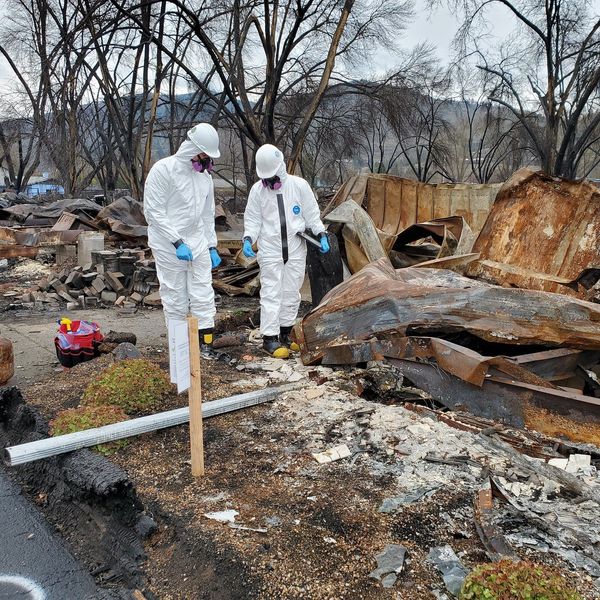While bald eagle populations have slowly recovered since the pesticide DDT was banned in 1972, toxic lead ammo has reduced population growth by 4% to 6% annually in the Northeast U.S., according to a new study.
The study, published today in the Journal of Wildlife Management, bolsters evidence that spent lead ammunition left in the carcasses of hunted animals continues to poison eagles, and researchers say that the findings should push hunters toward safer ammunition options, such as copper-based bullets.
Related: The campaign to keep toxic lead in hunting ammo and fishing tackle
“Hopefully, this report will add information that compels hunters, as conservationists, to think about their ammunition choices,” Krysten Schuler, assistant research professor in the Department of Public and Ecosystem Health at Cornell University and senior author on the study, said in a statement.
Lead attacks the nervous and reproductive systems of eagles and can make them lose their balance or ability to fly, have seizures, gasp, and tremor. Significant exposure kills them.
Misinformation on lead ammo

XRay image of lead fragments in a bald eagle's digestive system. (Credit: Avian Haven)
In the new study, researchers used a population model and autopsy records collected from 1990 to 2018 in a seven-state area in the Northeast—Connecticut, Massachusetts, Maine, New Hampshire, New Jersey, New York, and Vermont—to compare current populations with scenarios where lead ammo is reduced or eliminated. They estimated deaths from ingesting lead was linked to a 4.2% decline in female bald eagles, and 6.3% in males.
“Although current levels of lead contamination in the Northeast United States have not caused a region-wide decline of eagles, these conditions have stressed the resilience of this population,” the authors wrote.
The study comes on the heels of the EHN.org report, Misled on lead, in which we investigated hundreds of claims from webpages, documents, and testimony, and found that groups including the Congressional Sportsmen’s Foundation (CSF), the National Shooting Sports Foundation (NSSF), and the National Rifle Association (NRA) spread misinformation and engage in science denialism most of the time they communicate about lead ammunition or fishing tackle.
The series also found hunting and fishing—including the purchase of ammunition and fishing tackle—are crucial components of U.S. conservation funding, which leaves state wildlife agencies hesitant to address the lead issue.
Diminished growth rates

Necropsy photos of a juvenile bald eagle. (Credit: Cornell University)
It’s not all bad news: Schuler and colleagues found that total eagle numbers increased across the Northeast between 1990 and 2018. This lines up with U.S. Fish and Wildlife estimates that bald eagle numbers across the lower 48 states have quadrupled since 2009, now numbering roughly 316,000 birds.
However, there are other threats to bald eagle populations, Schuler said, including habitat loss, climate change, and viruses—and the deaths from lead ammo along with these other stressors could tip populations into decline.
“Even though the population seems like it’s recovered, some perturbation could come along that could cause eagles to decline again,” Schuler said.
While eagles and other scavenging birds eat the remains of hunted animals, other wildlife are at risk as well. Commons loons can swallow lead fishing tackle on lake bottoms. Mourning doves mistake spent shot for seed in fields and forests, according to the American Bird Conservancy. California condors were nearly wiped out from lead poisoning.
It’s not just birds: The researchers pointed out that trail cameras show coyotes, foxes, fisher, and bears also eat the spent carcasses left by hunters.
“We haven’t collected data on these other species in the same way that we pay attention to eagles,” Schuler said. “We’re putting eagles out there as a poster species for this issue, but they’re not the only ones being impacted.”
The researchers write that the study was limited because “dynamics of wildlife populations are notoriously difficult to predict.”
Banner photo: Bald eagle feeding juvenile bald eagles. (Credit: David O. Brown)
- Hunting, fishing, and science denial - EHN ›
- Lead ammo in hunted meat: Who's telling hunters and their families ... ›
- Misled on lead: Pushing back on lead ammo and fishing tackle ... ›
- Misled on lead: The science denial campaign to keep lead in ... ›
- Inside an eagle autopsy: How wildlife biologists investigate lead poisonings - EHN ›
- Inside an eagle autopsy: How wildlife biologists investigate lead poisonings - EHN ›
- Researchers call for action on lead-contaminated meat due to EHN reporting - EHN ›

























